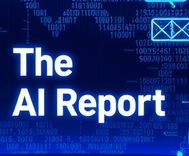Shah Muhammad, Sweco: How AI is building the future of our cities

The AI Report
Daily AI, ML, LLM and agents news
AI: The Master Architect of Tomorrow's Cities
Have you ever found yourself caught in gridlock, silently wishing for a smarter urban layout? Or perhaps you've gazed at a sprawling new development, wondering about its environmental footprint? For generations, the evolution of our towns and cities has been a meticulous, often arduous process, frequently relying on informed intuition rather than concrete predictions. Imagine empowering urban planners with foresight, allowing them to virtually experience countless future scenarios before the first brick is laid. This revolutionary capability is rapidly becoming a reality, and the driving force behind it is artificial intelligence.
Shah Muhammad, a leader in AI Innovation at the renowned design and engineering firm Sweco, articulates this transformation succinctly: "AI is revolutionising urban design and infrastructure planning at Sweco by optimising processes, enhancing decision-making, and improving sustainability outcomes. It allows us to analyse vast amounts of data, simulate various scenarios, and create more efficient and resilient urban environments."
Unlocking Unprecedented Efficiency and Foresight
AI's core strength lies in its ability to process and understand enormous datasets at speeds impossible for human teams. This translates into tangible benefits for city planning. Rather than educated guesswork, AI provides the capability to ask critical questions that directly impact daily life: How can a neighborhood be designed to drastically reduce traffic congestion and pollution? What architectural innovations will allow a building to remain comfortably cool during heatwaves without exorbitant energy consumption? By rapidly simulating thousands of possibilities, AI pinpoints the most optimal, sustainable, and liveable paths forward.
Navigating the Nuances of the Real World
Of course, the physical world is inherently complex, dynamic, and often unpredictable — a stark contrast to a perfectly controlled digital simulation. This inherent variability presents the primary challenge in applying data-driven models effectively. Shah acknowledges this head-on: "The biggest challenge in applying data-driven models to physical environments is the complexity and variability of real-world conditions. Ensuring that models accurately represent these conditions and can adapt to changing conditions is crucial."
To overcome this, the foundation must be robust. Before leveraging AI, organizations like Sweco focus on establishing impeccable data quality and interoperability. This means implementing stringent data governance practices, standardizing data formats, and adopting interoperable software tools. Think of it as ensuring every part of a complex orchestra is playing from the same sheet music, using instruments that can seamlessly communicate. This meticulous preparation enables effortless data exchange and collaborative efforts across diverse teams and stakeholders, building the trust essential for AI's successful deployment.
AI with a Conscience: Championing Sustainability
Perhaps one of the most compelling applications of AI in urban development lies in its profound impact on environmental sustainability. While numerous projects demonstrate AI's quantifiable contributions, Shah highlights a particularly impactful area: "However, if I were to choose, I would highlight a project where AI was used to preserve biodiversity by identifying endangered species and providing this information to researchers."
This exemplifies AI's potential to give nature a vital voice in the planning process. It's the equivalent of AI alerting planners to sensitive ecological zones, ensuring that development proceeds with an acute awareness and respect for the surrounding ecosystem. This capability allows us to build not just efficiently, but responsibly, fostering harmony between human progress and the natural world.
The Horizon: Predictive Analytics and Automation
Looking ahead, the next frontier for AI in the Architecture, Engineering, and Construction (AEC) sector is clear: predictive analytics and automation. As Shah explains, "By anticipating future trends, identifying potential issues early, and automating routine tasks, AI can greatly enhance efficiency, reduce costs, and improve the overall quality of projects."
Imagine bridges that automatically signal the need for maintenance long before structural issues arise, roads designed to minimize wear and tear, and construction schedules that adapt in real-time to unforeseen delays. This evolution promises not only safer, more durable infrastructure but also significantly less disruption to daily life. Crucially, it empowers talented human professionals to shift their focus from repetitive, time-consuming tasks to the higher-level strategic and creative challenges inherent in designing truly innovative and human-centric cities of the future.
The integration of AI into urban planning is no longer a distant concept; it's a present-day reality transforming how we envision, design, and build our living spaces. By embracing rigorous data practices, leveraging AI's analytical power, and prioritizing its ethical applications, we are poised to create cities that are not just smarter, but also more sustainable, resilient, and ultimately, better places for everyone to call home.

The AI Report
Author bio: Daily AI, ML, LLM and agents news
